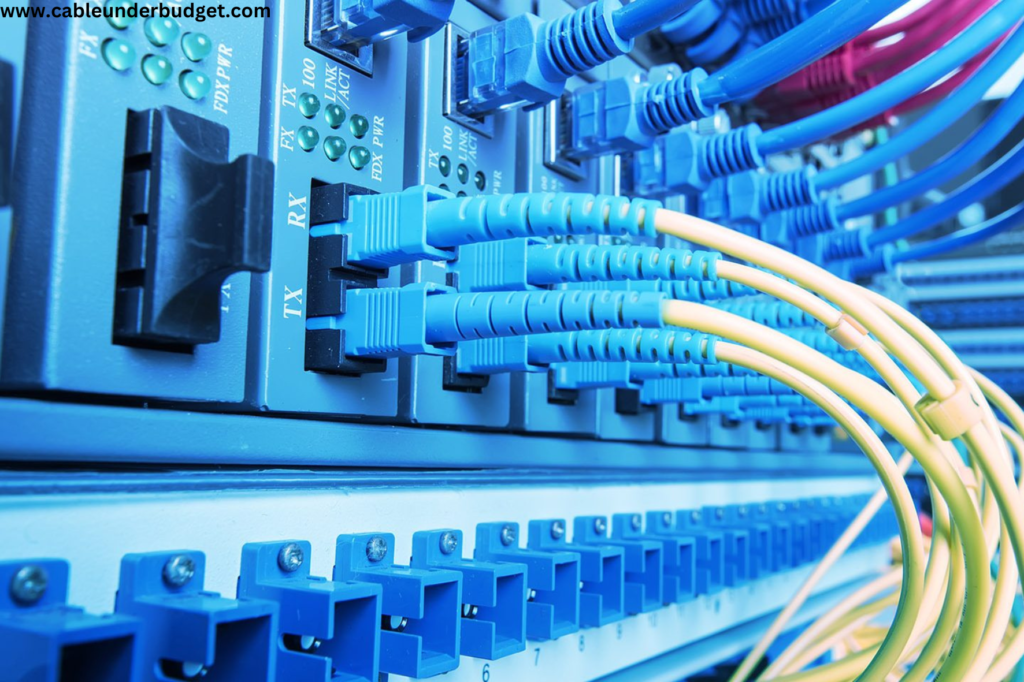Contents
Introduction to what are RJ45 Connectors
RJ45 connectors are the backbone of modern networking, facilitating seamless communication between devices in various settings. Whether you’re setting up a home network or managing a complex enterprise infrastructure, understanding RJ45 connectors is essential. Let’s delve into the world of RJ45 connectors to uncover their significance and functionality.

What are RJ45 Connectors?
RJ45 connectors, also known as Registered Jack 45 connectors, are standardized connectors used primarily for Ethernet networking. They serve as the interface between Ethernet cables and networking hardware, such as computers, routers, switches, and modems. These connectors enable data transmission through twisted-pair cables, ensuring reliable connectivity in local area networks (LANs) and wide area networks (WANs).
These connectors feature eight pins that correspond to eight conductors within the Ethernet cable. These pins are essential for maintaining proper signal integrity and ensuring data transfer at high speeds. Additionally, these connectors come in various configurations, including straight-through and crossover, to accommodate different network setups and communication requirements.
Anatomy of an RJ45 Connector
Understanding the anatomy of an RJ45 connector is crucial for proper installation and maintenance. Each connector comprises several components, including:
-
- Plug: The plug is the part of the connector that inserts into the Ethernet port of a device, such as a computer or router.
- Cable Jacket: The cable jacket surrounds the twisted-pair wires, providing protection and insulation.
- Strain Relief: The strain relief prevents excessive bending or pulling of the cable, reducing the risk of damage to the connector.
- Contacts: The contacts, or pins, make electrical contact with the corresponding pins in the Ethernet port, facilitating data transfer.
- Housing: The housing encases the internal components of the connector, ensuring structural integrity and stability.
Types of RJ45 Connectors
RJ45 connectors come in various types to suit different networking requirements and environments. Some common types include:
Standard RJ45:
Standard RJ45 connectors are the most common type, widely used in Ethernet networking. They offer a balance of performance, cost, and ease of use, making them ideal for various applications.
Shielded vs Unshielded RJ45:
Shielded RJ45 connector feature additional shielding to protect against electromagnetic interference (EMI) and external noise, making them suitable for environments with high interference levels. Unshielded RJ45 connector, on the other hand, are more economical but may be prone to interference in certain conditions.
Waterproof RJ45:
Waterproof RJ45 connectors are designed for outdoor or industrial applications where moisture and dust may pose a threat to connectivity.
Modular RJ45 connectors
Modular RJ45 connector allow for easy customization and reconfiguration of network connections. They feature modular designs that enable users to swap or upgrade components without replacing the entire connector

How to Install RJ45 Connectors
Installing RJ45 connectors requires precision and attention to detail to ensure optimal performance. Here’s a step-by-step guide to installing
-
- Prepare the Cable: Strip the outer jacket of the Ethernet cable to expose the twisted-pair wires. Untwist and arrange the wires according to the desired wiring scheme, such as T568A or T568B.
- Insert the Wires: Carefully insert the arranged wires into the RJ45 plug, ensuring each wire makes proper contact with its corresponding pin.
- Crimp the Connector: Use a crimping tool to securely crimp the connector onto the cable, ensuring a strong and reliable connection.
- Test the Connection: After crimping, use a cable tester to verify the integrity of the connection and ensure proper continuity.
- Repeat as Necessary: Repeat the process for each end of the Ethernet cable, ensuring consistency in wiring and crimping.
Advantages and Disadvantages of RJ45 Connectors
Advantages
RJ45 connectors offer several advantages, including:
-
- Universal Compatibility: RJ45 connectors are compatible with a wide range of devices and networking equipment, ensuring interoperability in diverse environments.
- High Performance: With proper installation and maintenance, RJ45 connectors can support high-speed data transfer rates, making them ideal for demanding applications.
- Cost-Effectiveness: RJ45 connectors are cost-effective solutions for establishing Ethernet connections, offering reliable performance at affordable prices.
Disadvantages
Despite their widespread use, RJ45 connectors have some limitations, including:
-
- Limited Distance: Ethernet cables using RJ45 connector have distance limitations, requiring additional hardware such as repeaters or switches for long-distance connections.
- Susceptibility to Interference: Unshielded RJ45 connector are susceptible to electromagnetic interference (EMI), which can degrade signal quality and affect network performance.
RJ45 vs Other Connectors
When comparing RJ45 connector to alternative connectors like RJ11 connectors, several factors come into play, including:
-
- Performance: RJ45 connector offer reliable performance and compatibility, making them suitable for a wide range of applications.
- Cost: RJ45 connector are cost-effective solutions for Ethernet networking, especially when compared to proprietary connectors or fiber optics.
- Ease of Installation: RJ45 connector are relatively easy to install and maintain, requiring minimal specialized tools or expertise compared to other connector types.
Applications
RJ45 connector find applications in various industries and settings, including:
-
- Networking: RJ45 connector are the standard interface for Ethernet networking in homes, offices, data centers, and telecommunications networks.
- Industrial Automation: RJ45 connector are used in industrial automation systems for connecting sensors, actuators, and control devices.
- Surveillance Systems: RJ45 connector are commonly used in IP-based surveillance systems for connecting cameras, recorders, and network switches.
Conclusion
In conclusion, RJ45 connector play a pivotal role in modern networking, providing reliable connectivity for a wide range of applications. Understanding the anatomy, installation process, and potential issues associated with RJ45 connector is essential for maintaining robust and efficient networks. By staying informed about the latest trends and technologies, network professionals can harness the full potential of RJ45 connector to meet the evolving demands of the digital age.

